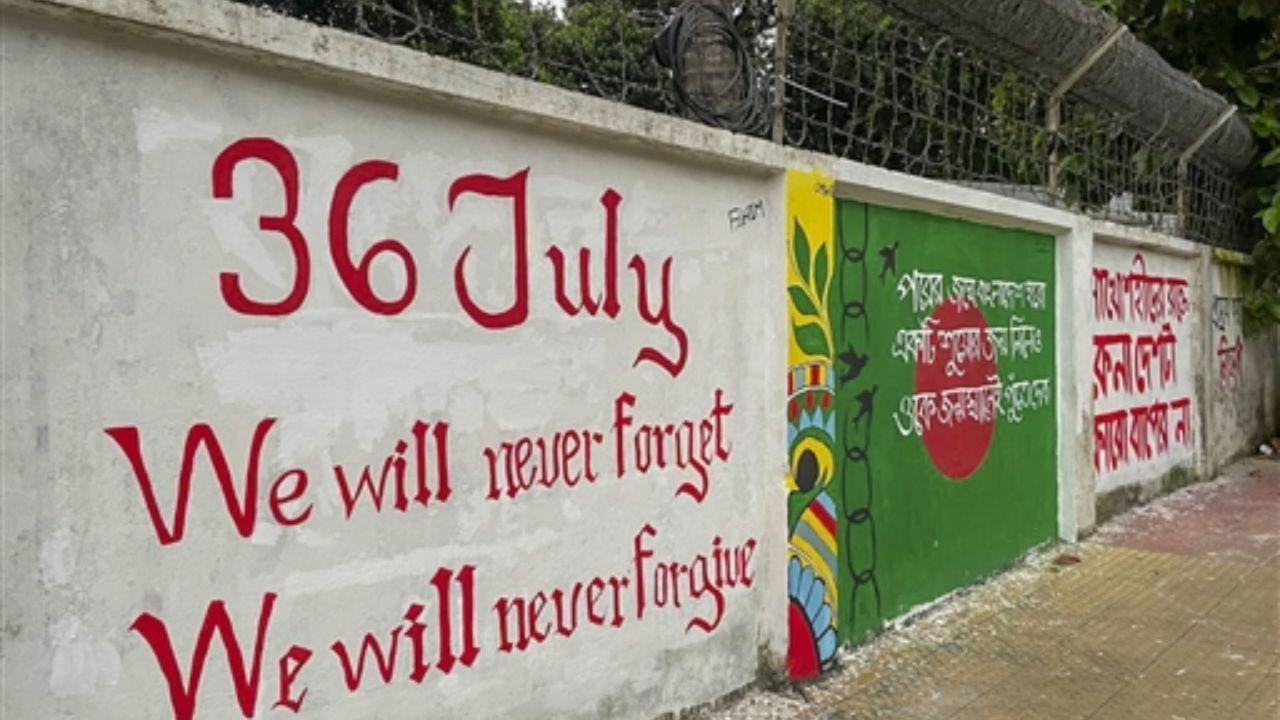Home / News / World News / Article /
'New Bangladesh', '36 July': Artworks grow on Dhaka walls to memorialise protests
Updated On: 20 August, 2024 04:41 PM IST | Dhaka | PTI
`This is New Bangladesh` -- screams one of the graffiti spray-painted on the gates of an official bungalow in the Dhaka University area -- one of the hotbeds of the recent anti-government protests in Bangladesh.
Listen to this article :

Murals seen across Dhaka mortalising the anti-government protests/ PTI
`This is New Bangladesh` -- screams one of the graffiti spray-painted on the gates of an official bungalow in the Dhaka University area -- one of the hotbeds of the recent anti-government protests in Bangladesh.
Another mural carries the slogan `Long Live the Resistance` with images of the country`s national flag and human hands painted on the wall.
Read Next Story



